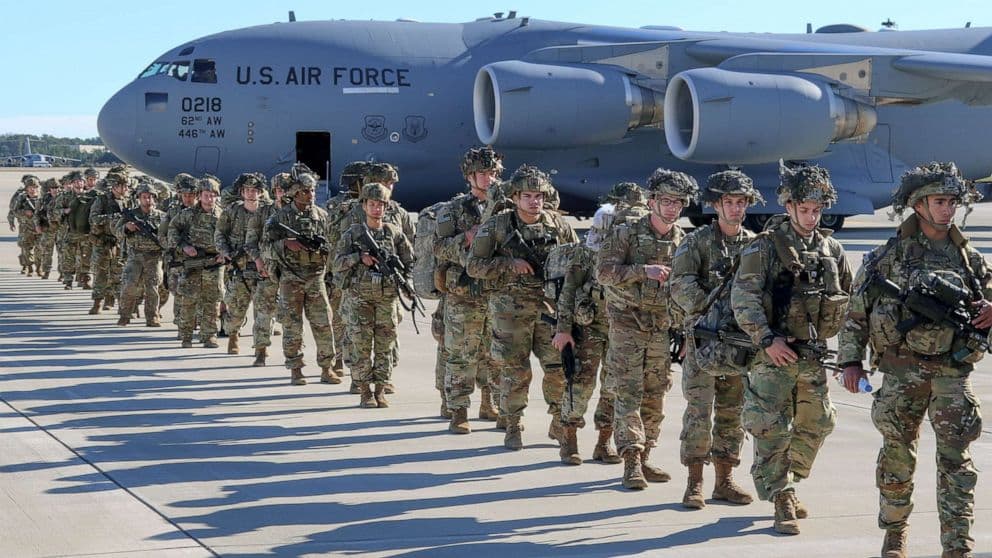Deployment is a critical aspect of military service, and it can be a challenging experience for soldiers and their families. Whether you are a new member of the Army, advancing in the military, dealing with logistics, or facing health issues, there are many resources available to help you navigate the deployment process. In this guide, we’ll explore the key aspects of soldiers’ deployment, including new members of the Army, advancing in the military, logistics for service members, and support for wounded, ill, or injured soldiers and their caregivers.
Part 1: New Members of the Army
If you’re a new member of the Army, the deployment process can be overwhelming. Here are some essential tips to help you navigate your first deployment successfully:
- Communicate with your unit: Make sure you know your unit’s deployment schedule, including the dates and locations of training and deployment. Stay in touch with your unit leaders and ask questions if you are unsure about anything.
- Stay informed: Keep up-to-date with the latest news and information about your deployment. Stay in touch with family and friends back home, and let them know what to expect.
- Stay healthy: Ensure you are physically and mentally fit before deploying. Maintain a healthy lifestyle, get enough rest, and seek help if you’re struggling with mental health issues.

Part 2: Advancing in the Military
Advancing in the military can be a rewarding experience, but it can also mean more frequent deployments. Here are some tips to help you prepare for deployment as you advance in the military:
- Stay organized: Keep track of your personal and professional goals, and make sure you plan to achieve them. Stay organized with your deployment paperwork, and ensure you have all the necessary documents.
- Train for your job: Make sure you are fully trained and qualified for your job. Attend training sessions and take advantage of professional development opportunities to enhance your skills.
- Prepare your family: Communicate with your family about your deployment plans and ensure they have access to resources and support services. Make sure your family has a plan in place in case of emergencies.
Part 3: Logistics for Service Members
Logistics are a critical aspect of deployment, and service members need to be prepared for the challenges of living and working in a new environment. Here are some logistics tips for service members:
- Pack wisely: Pack essential items, including personal hygiene items, clothing, and any necessary medication. Check with your unit for specific packing guidelines.
- Stay connected: Keep in touch with family and friends back home. Take advantage of technology, including video calls and messaging apps, to stay connected.
- Plan for emergencies: Have a plan, including evacuation and emergency contacts. Ensure you have all the necessary documents, including insurance and medical records.

Part 4: Wounded, Ill or Injured, & Their Caregivers
For soldiers dealing with injuries or illnesses, deployment can be particularly challenging. Here are some tips for wounded, ill, or injured soldiers and their caregivers:
- Seek medical help: If you’re dealing with injuries or illnesses, seek medical help as soon as possible. Take advantage of your available resources, including medical professionals and support services.
- Stay connected: Stay in touch with family and friends, and communicate regularly with your unit leaders. Let them know if you need extra support or resources.
- Take care of yourself: Make sure you take care of yourself physically and mentally. Take advantage of the resources available to help you manage stress and mental health issues.
In conclusion, deployment can be a challenging experience for soldiers and their families. However, by being prepared and taking advantage of the resources available
FAQs
What is the process for a soldier to deploy?
A soldier’s deployment process typically involves receiving orders, attending pre-deployment training, completing required paperwork and medical screenings, and preparing personal and equipment items for shipment.
How long is a typical deployment?
The length of deployment can vary depending on the mission and location, but it is typically between 6 to 12 months.
What resources are available to help soldiers and their families during deployment?
The Army offers various resources to help soldiers and their families during deployment, including counseling services, financial assistance programs, and support groups.
Can family members visit soldiers during deployment?
In some cases, family members may be able to visit soldiers during deployment, depending on the location and mission requirements. However, there are often restrictions on travel and visitation due to security concerns.
What are some tips for advancing in the military during deployment?
Some tips for advancing in the military during deployment include staying focused on personal and professional goals, seeking out training opportunities, and taking on additional responsibilities.
How are logistics handled during deployment?
Logistics during deployment are managed by a variety of Army units and personnel, including logistics specialists, transportation personnel, and support personnel. They are responsible for coordinating the movement of personnel and equipment and providing supplies and support to deployed soldiers.
What resources are available for wounded, ill, or injured soldiers and their caregivers?
The Army offers various resources for wounded, ill, or injured soldiers and their caregivers, including medical care, rehabilitation services, and financial assistance programs. Additionally, support groups and counseling services are available to help soldiers and their families cope with the challenges of recovery.
